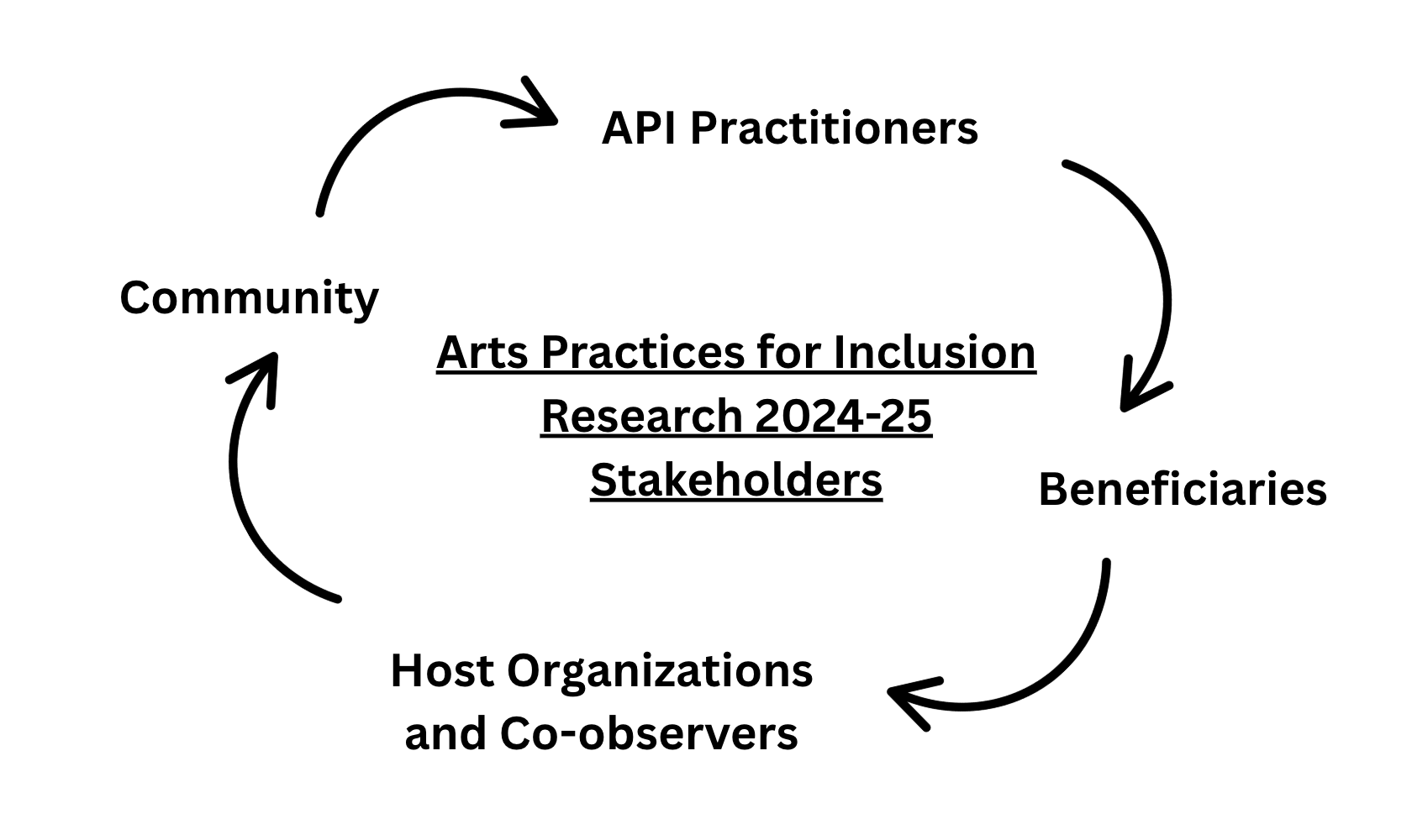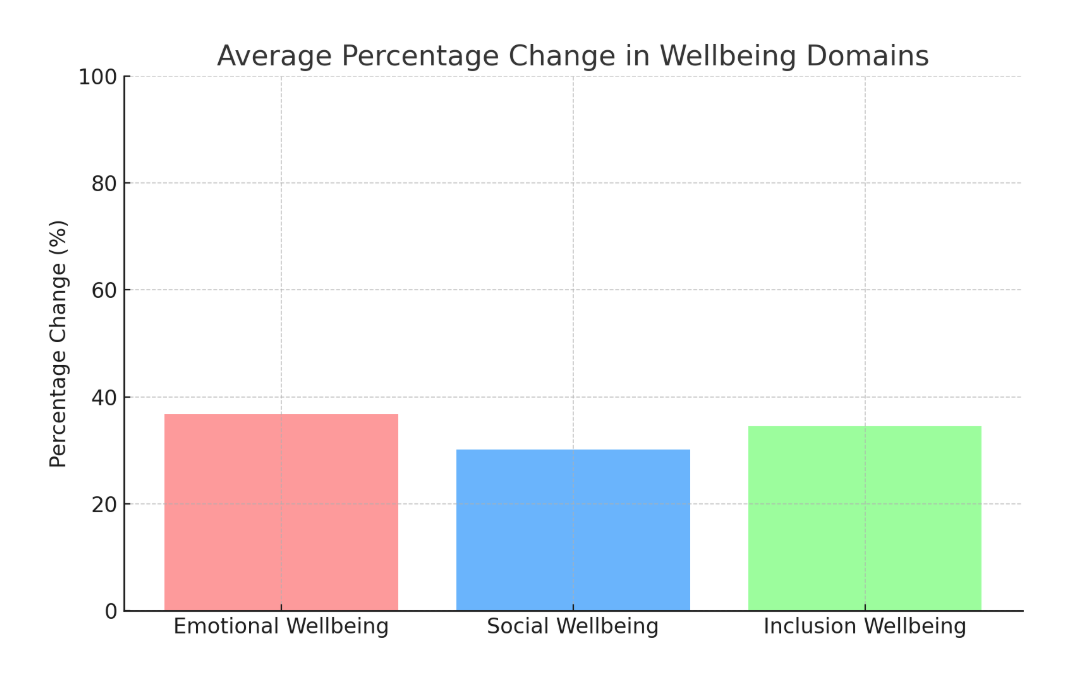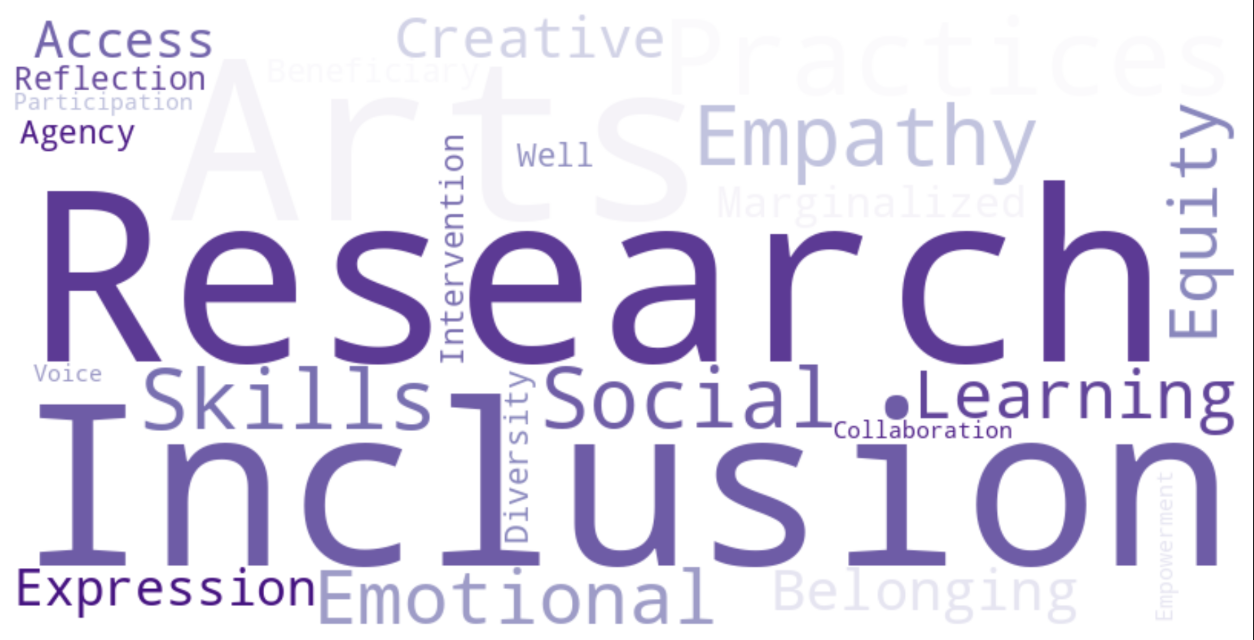Bringing Arts and Inclusion Together
At the heart of the Snehadhara Foundation’s work lies a simple, powerful belief: the arts can help us build bridges. The Arts Practices for Inclusion one-year certificate course is designed to equip students with the skills and understanding to use arts practices as a means of fostering inclusion and well-being in diverse settings. As part of their certification, students facilitate a series of API sessions under the mentorship of program supervisors.
They use what they’ve learned to work with children and adults with disabilities, people at risk, and those who are navigating difficult life circumstances. The 2024-25 cohort saw 15 students working closely with 110 individuals across cities like Bangalore, Chennai, Delhi NCR, Hyderabad, Indore, and Trivandrum.
How the Research Worked
To understand the impact of these arts-based sessions, students conducted assessments at two key points during their journey—once mid-way and again at the end. These assessments focused on three areas:
- Emotional well-being (how people feel and understand their emotions)
- Social well-being (how people interact and relate with others)
- Inclusion well-being (how people feel part of a group or community)
Both the student and a co-observer assessed each participant independently to ensure accuracy and fairness. A total of 2,876 responses were collected and analysed using reliable statistical tools. The consistency in scoring across observers was strong, pointing to a solid, trustworthy evaluation process.
This collaborative process involved multiple stakeholders—API practitioners, host organizations, co-observers, the beneficiaries themselves, and the broader community. Each played a vital role in both implementing and informing the research. API practitioners brought creative facilitation, host organizations offered contextual grounding, co-observers ensured unbiased evaluation, beneficiaries engaged with and responded to the interventions, and communities became the nurturing backdrop for change.

What We Found: The Power of Arts in Action
Across all the projects, there was a consistent story—one of growth, connection, and transformation. While every group had its own journey, most showed improvements in how participants expressed their emotions, interacted with others, and felt a sense of belonging.
Each domain came alive through the sessions:
- Emotional Wellbeing- Participants learned to name their feelings, share them more openly, and manage big emotions with care. A story shared by one facilitator talked about a child who began to smile more, use gestures to express joy, and even comfort peers—something they hadn’t done before.
- Social Wellbeing- Many participants built trust with their group members, shared tasks, and celebrated small wins together. Through games, music, and drama, they found new ways to relate to each other, communicate, and work as a team.
- Inclusion Wellbeing- Inclusion is more than being physically present. It’s about feeling seen, heard, and valued. Many participants began to step forward, contribute to group tasks, and support one another. There was a visible sense of “we belong together.”

Why This Matters
This research doesn’t just highlight numbers—it shows the possibilities of what can happen when we combine creativity with care. Here’s what we’ve learned:
- The arts are powerful tools for change. They help people connect with themselves and others in deeply meaningful ways.
- Inclusion must be experienced. Where there is a sense of belonging and choice given, with a freedom to exercise that choice, true inclusion happens.
- The journey matters. Regular, consistent sessions led to greater impact—reminding us that trust and change take time.
- Flexibility is essential. Different beneficiaries need different things. Facilitators who adapted their methods saw greater connection and growth.
Looking Ahead: Stories That Stay With Us
What stays with us are not just the graphs or the reports—but the people. The young adult who expressed themselves through painting for the first time. The elder who remembered an old song and sang it for everyone. The group that danced, laughed, and found joy—together.
That is what Arts Practices for Inclusion is all about!

